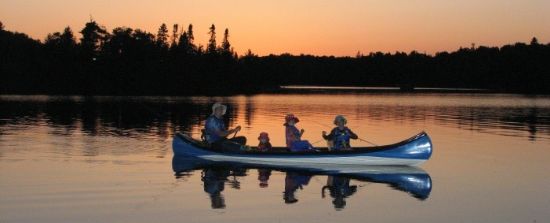by Larry
June, 2007Largest Great Lake Becoming Less SuperiorSince 1979, Lake Superior has had temperature increases near the surface of about 5°F. And its water level is dropping. In a weird global warming fluke, higher temperature lake surfaces interact with lower temperature but moisture laden airflows, resulting in greater frequencies and depths of area snowfalls. However, it turns out that snow only contributes about 1% to the levels of the Great Lakes. The lake level drop is due to two main factors, first a drought, for obvious reasons. Second, there is now more Lake Superior evaporation, since there is less ice cover during the winters, resulting in more evaporation: water absorbs solar radiation, whereas ice tends to reflect it. The evaporation, mainly in winter, is not at all balanced by the extra snow and is having the more profound effect. If the situation is not reversed, it will have a big impact on shipping. For every one-inch drop in the Great Lakes' depth, ships must give up about 270 tons of otherwise profitable freight to keep the vessels from running aground. Meanwhile, the diminished water depth affects the Great Lakes' total surface area. Some lake coastal communities will see many square miles of reduced commercial and recreational water areas. In places, expensive home developments may be left high and dry. The ecology of the lakes will suffer as well, as now common species die off and are replaced by more problematic ones.

Today Lake Superior alone holds around 10% of the world's liquid supply of fresh water. In years to come, though, this may be decreased to only 8-9%, a seemingly insignificant transformation that could, however, bode ill for local real estate, tourism, fishing, agriculture, and commercial boat traffic. Already, in the last few decades, the mean Lake Superior depth has gone down over a foot and a half. Pressure is growing as well to tap into the Great Lakes for vital moisture to serve the water needs of an increasingly hot and dry southwestern part of the nation. If politicians give in to such demands, Lake Superior's (and the other Great Lakes') transition into "Lesser Lakes" could accelerate dramatically. Of course, on the human scale, even fairly rapid geographic alterations can seem slow. And few changes fail to bring some benefit. Those occurring to Lake Superior are not likely to be exceptional in this respect. The direst outcomes are still anticipated to be half a century or more in the future. Meanwhile, can a warmer Lake Superior really be all that bad? Perhaps in this brave new global warming world its shores may become as balmy and sought after as the French Riviera. And for folks nearby who love boating, fishing, or swimming, what could be so terrible about its offering ice-free and warmer waters for most of the year?
Sources:
Global Warming is Shrinking the Great Lakes. Jessica Marshall in New Scientist Magazine, Issue 2606, pages 8-9; May 30, 2007. |